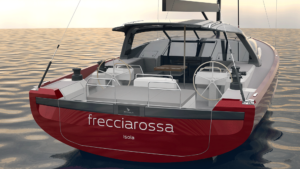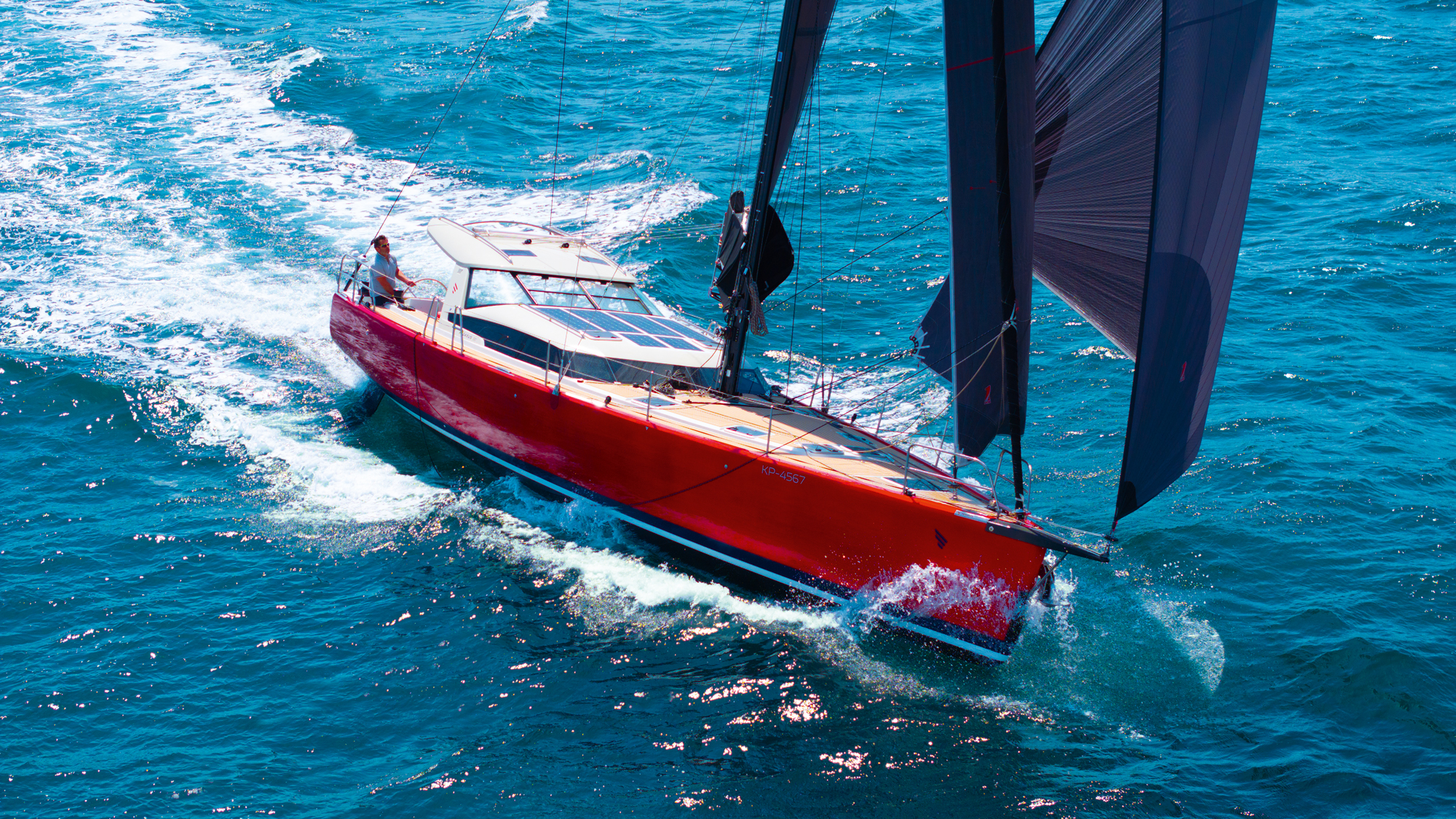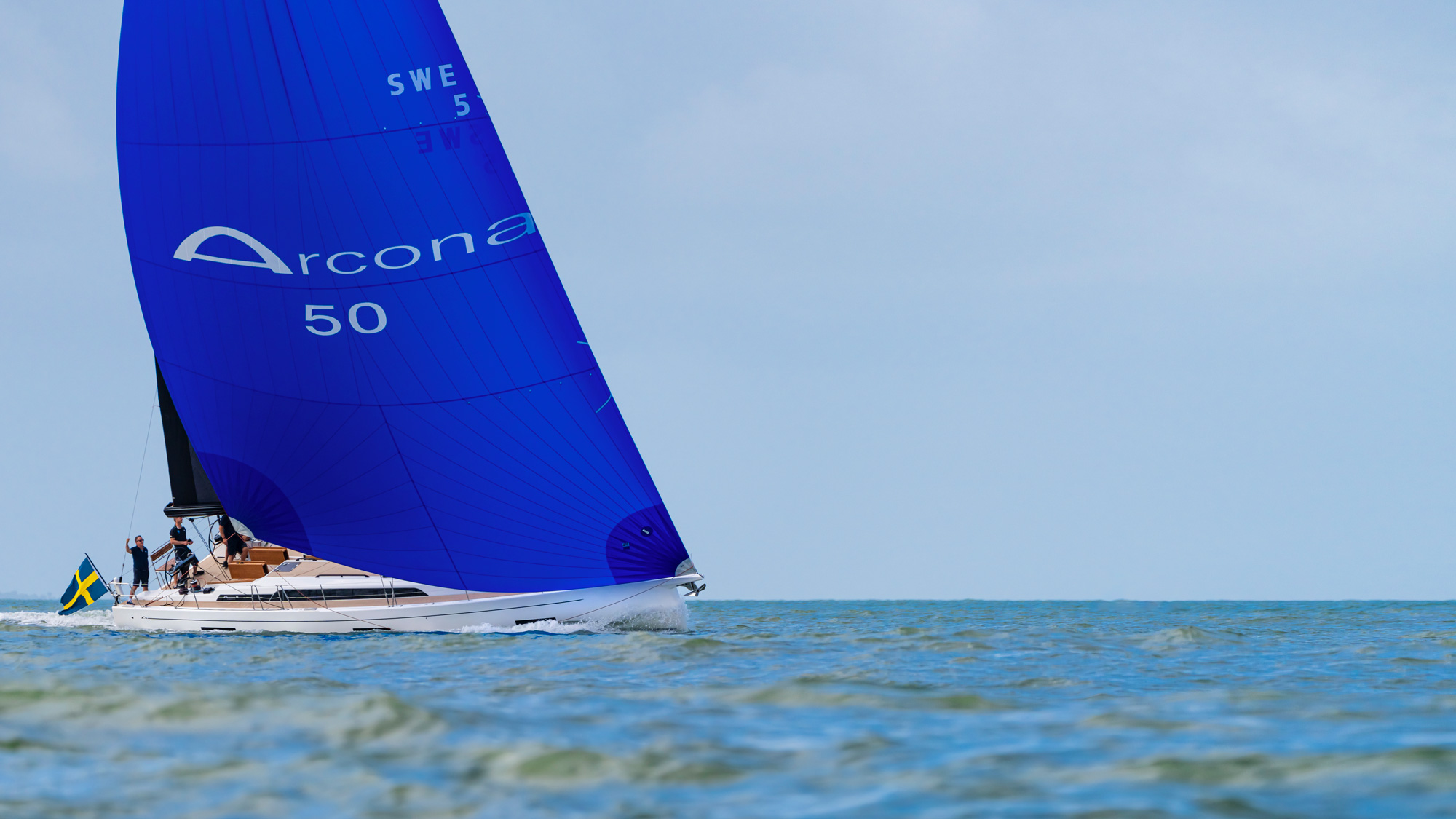The new Pegasus 67 responds to calls from owner-drivers for a larger version of the Pegasus 50
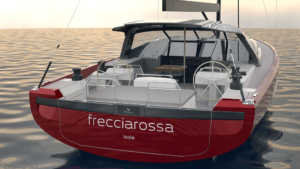
The Pegasus 50 is one of the standout yachts we have trialled in recent years. It’s a brilliant design for both its performance ability in lighter breezes, and its deck and cockpit layout, which will look after short-handed sailors while sailing serious passages. Having built 18 of these since this Slovenian yard formed in 2019, and after multiple requests for a larger version, Pegasus is now announcing this Pegasus 67. It gave YW the exclusive.
As you can see, the concept is very much in line with the original yacht, so is again aimed at owner-drivers. It’s a platform which offers the performance of a 65ft+ hull with the ease of handling of one 10ft shorter. “We want to build a boat that a couple would not hesitate to take out on a windy day,” designer Marko Pas explains.
Refreshingly, length is not the decisive factor here. Volume and displacement are the controls, built on the desire to keep it to under 25 tonnes loaded – consider that similar length 60-65ft cruising yachts are typically 10-tonnes heavier.
Weight is reduced by minimising hull volume where it’s not needed, and max beam is kept comparatively narrow. This helps Pegasus’s desire to present the P67 as visually small as possible, so as not to put sailors off by its size.
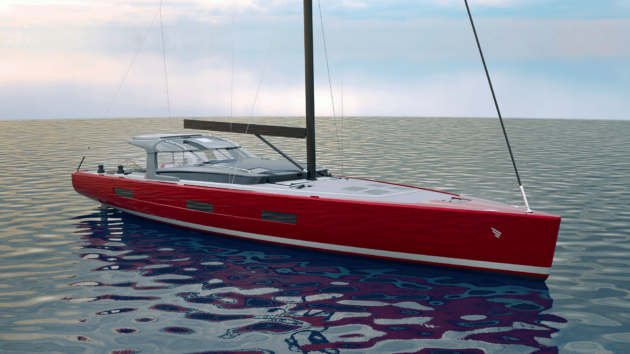
Long, sleek hull of the Pegasus 67 is designed to be easily handled by a sailing couple even in challenging weather.
In terms of internal hull volume, it’s more comparable to a 57-59ft yacht. Indeed, the 67 began at 59ft, but Pegasus chose to extend the hull forward rather than add a bowsprit. The company’s view is that this adds more performance and a softer entrance and gives more sail locker space, while doing the same aft created space for a dinghy garage and gangway.
This struck a chord, as longer hull lengths can really help with passage speeds if you can control weight. On a fast cruising cat, for example, you’d ideally make it as long as you could handle (and afford) but with empty ends.
Today’s 60ft+ monohulls typically have wide aft beams and a tall sailplan to help the weighty volume in light winds, but Pegasus’s ‘less is more’ philosophy sees it using the length for speed not volume. “It’s the total boat displacement that makes the difference, not the length,” argues Pas.
As per the P50, the design is by Pas, also responsible for the Shipman carbon cruising range. Pegasus then went to Juan K, chiefly for his computing power rather than any big name promotional reasons, “to optimise the hull appendages and to make the sailplan as small as possible, and to run the VPPs on these.”
Keeping displacement light and low allows for less mast height and standing rigging, and less sail to manage. The P67 is conceived for light wind sailing and serious passagemaking. So despite bow sections deliberately designed for a soft entry, that means sailing with the tradewinds when possible. Offwind sails will typically be left rigged on furlers, with lines and reef controls led to the cockpit, while the mainsheet is out of harm’s way on the fixed arch.
This leaves the proper all-weather cockpit protected by a composite roof and windshield, both features integrated into the design rather than as a bolt-on extra option. The cockpit, saloon and galley, where most spend the majority of time aboard a yacht, are all sited as centrally as possible, and linked by only two steps.
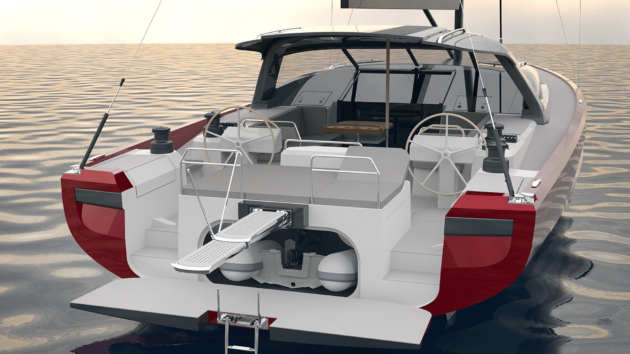
Almost all equipment required for bluewater sailing is included in the base price
The saloon features a similar gimballing settee seen on the P50 and the engine room is again deliberately placed aft, under the cockpit sole to keep noise and smells from the interior.
In terms of layout, the chief gain of the P67 over its smaller sister is the space to house two aft cabins. This gives the option for three or four cabins with two or three heads. And there can be full separation between guest and owner’s cabins. The latter can be a super-suite that takes the full area forward of the main bulkhead.
Fitout looks really thorough for cruising, including the doubling-up of all major systems for redundancy, such as autopilot, watermaker, pumps, batteries and charging. There are two technical lockers, one for pumps and liquids, one for electrics.
The Pegasus is built using vacuum-infused epoxy or Vinylester, with a hybrid of glass and carbon fibres on a PVC core. The first boat is expected to be ready by early 2027. The standard price comes with a very full spec, which includes a painted hull, Estec decking, carbon mast, sails including Code 0, thrusters and aircon.
Article continues below…
Pegasus 50 review: the best 50ft yacht you haven’t heard of?
Three towering masts pierce the skyline off Trieste, where the impounded Sailing Yacht A lies forlorn at anchor like a…
Arcona 50 review: Luxury performance cruiser
Arcona – a Swedish yard with a sound reputation for producing traditional style cruiser-racers, designed by a little known Swede…
Pegasus 67 Specifications:
LOA: 20.46m 67ft 2in
LWL: 19.50m 64ft 0in
Beam: 5.60m 18ft 6in
Draught: 3.00m 9ft 10in
Displacement (light): 21,000kg
Price: €3.5m ex VAT
Contact details: pegasus-yachts.com
 If you enjoyed this….
If you enjoyed this….
Yachting World is the world’s leading magazine for bluewater cruisers and offshore sailors. Every month we have inspirational adventures and practical features to help you realise your sailing dreams.Build your knowledge with a subscription delivered to your door. See our latest offers and save at least 30% off the cover price.
Note: We may earn a commission when you buy through links on our site, at no extra cost to you. This doesn’t affect our editorial independence.
The post Pegasus 67 first look: A roomier Pegasus 50 for sailing couples appeared first on Yachting World.
